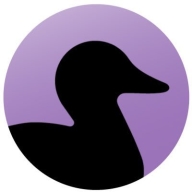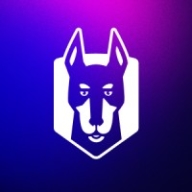

Black Duck SCA and Snyk are competing products in the software composition analysis category, focusing on open source security and management. Snyk seems to have the upper hand due to its advanced features, making it a compelling choice despite higher pricing considerations.
Features: Black Duck SCA excels in comprehensive open source license compliance, deep code scanning capabilities, and risk mitigation strategies. Snyk offers robust integration with development environments, real-time vulnerability scanning, and automated patches, with a seamless developer-centric approach for easier integration into existing workflows.
Room for Improvement: Black Duck SCA could improve the user interface for better ease of use and enhance real-time scanning capabilities. It can also focus on more efficient deployment models. Snyk could enhance its vulnerability database to cover more uncommon libraries and improve its documentation for deeper technical scenarios. It could also address false positives more effectively.
Ease of Deployment and Customer Service: Black Duck SCA employs a traditional, resource-intensive deployment model but offers extensive customization, while Snyk's cloud-based model allows for quicker setup and scaling, appealing to agile environments. Snyk also provides quicker response times and more proactive support, aligning well with its modern deployment approach.
Pricing and ROI: Black Duck SCA has higher upfront setup costs but may offer long-term ROI benefits through detailed compliance checks. Snyk, although more costly, provides immediate value with its low-friction integration and rapid vulnerability management, justifying its price with faster time-to-value and a focus on continuous security improvement.
If you're using it on critical external programs where there is regulatory compliance on ensuring that the source code is clean from open-source, there's substantial ROI.
There are some pain points with the response time and first-level support quality.
Their response time aligns with their SLA commitments.
Our long-standing association has ensured smooth communication, resulting in favorable support experiences and satisfactory issue resolution.
I would rate the scalability of Black Duck 8 or 9.
Snyk allows for scaling across large organizations, accommodating tens of thousands of applications and over 60,000 repositories.
It can improve on the security side of it, specifically vulnerabilities identification.
There are areas for improvement such as false positives and the scanning of containers.
Black Duck does not have the SBOM management part.
It lacks the ability to select branches on its Web UI, forcing users to rely on CLI or CI/CD for that functionality.
As we are moving toward GenAI, we expect Snyk to leverage AI features to improve code scanning findings.
The inclusion of AI to remove false positives would be beneficial.
Snyk is recognized as the cheapest option we have evaluated.
After negotiations, we received a special package with a good price point.
Black Duck's ability to identify dependencies very accurately has been most valuable in identifying and mitigating risks.
The most valuable feature of Black Duck is the composition analysis feature, which is effective for security risk management.
The software composition analysis is most effective for security risk management.
Snyk helps detect vulnerabilities before code moves to production, allowing for integration with DevOps and providing a shift-left advantage by identifying and fixing bugs before deployment.
Our integration of Snyk into GitHub allows us to automatically scan codebases and identify issues, which has improved efficiency.
The best feature of Snyk is the integration with our ticketing system, which is Jira.
| Product | Market Share (%) |
|---|---|
| Black Duck | 16.7% |
| Snyk | 13.1% |
| Other | 70.2% |


| Company Size | Count |
|---|---|
| Small Business | 6 |
| Large Enterprise | 16 |
| Company Size | Count |
|---|---|
| Small Business | 20 |
| Midsize Enterprise | 8 |
| Large Enterprise | 21 |
Black Duck is an essential tool for software composition analysis and license compliance. It identifies vulnerabilities effectively and supports security management in DevOps environments, offering integration, performance stability, and community support.
Organizations rely on Black Duck for seamless integration in CI/CD pipelines, thorough scanning of source and binary codes, and management of operational risks associated with open-source and commercial licenses. It plays a crucial role in security risk management and delivers a robust policy management framework. Users value its ease of use and reliable community support while benefiting from its comprehensive dependency visualization capabilities. Despite its strengths, there is room for enhancement in integration with other tools, UI friendliness, and reporting features.
What are Black Duck's key features?
What should users look for in ROI?
Enterprise environments use Black Duck extensively for security, compliance, and risk management, ensuring software meets regulatory standards and mitigates vulnerabilities. Its implementation in specific industries aids in controlled and secure software development processes, underlining its role in maintaining rigorous security standards while delivering dependable performance.
Snyk's AI Trust Platform empowers developers to innovate securely in AI-driven environments, ensuring rapid and secure software development with enhanced policy governance.
Snyk’s platform integrates AI-ready engines across the software development lifecycle, offering broad coverage with high speed and accuracy essential for fast-paced coding environments. AI-driven features include visibility, prioritization, and tailored security policies that enable proactive threat prevention and quick remediation. By focusing on LLM engineering and AI code analysis, Snyk supports secure and productive development processes. The platform's partnerships, including GenAI code assistants, enhance AI application security by addressing new threats and code velocity challenges.
What are the key features of Snyk?Snyk is implemented across industries focusing on agile development and DevSecOps, enhancing software delivery speed and security. It is widely used for continuous monitoring and adherence to security and licensing standards, especially in environments relying on Docker image security and CI/CD pipeline integration.
We monitor all Software Composition Analysis (SCA) reviews to prevent fraudulent reviews and keep review quality high. We do not post reviews by company employees or direct competitors. We validate each review for authenticity via cross-reference with LinkedIn, and personal follow-up with the reviewer when necessary.